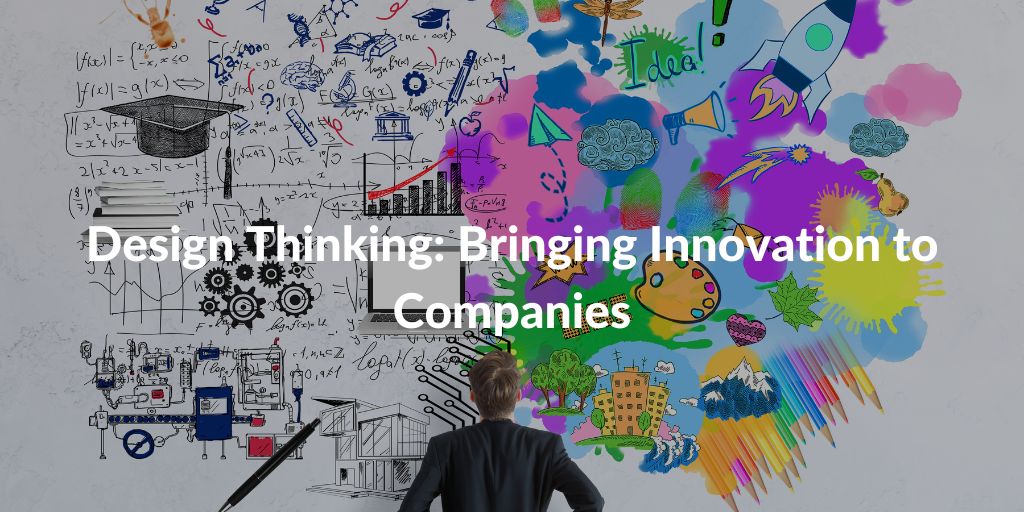Innovation is the key to ensuring the growth and sustainability of companies in an increasingly competitive and evolving market. Design Thinking emerges as a powerfully effective methodology to nurture creativity and generate innovative solutions, oriented towards real user needs.
What is Design Thinking?
Design Thinking is a problem-solving approach that places special emphasis on the user, fostering creativity and innovation through a deep understanding of customer needs and the adoption of a method of experimentation and iteration. Aiming to create solutions that are not only functional, but also truly useful and of value to users, Design Thinking is a path that runs through understanding, devising, prototyping and testing solutions.
Key benefits of adopting Design Thinking
1. A Different View of Problems and Opportunities
Design Thinking shifts the focus from an internal to an external view of the company, focusing on understanding users’ experiences, needs and desires. It helps develop the ability to look at problems from different angles, identifying hidden opportunities and creating solutions that are more aligned with customer expectations.
2. Encourages creativity
This approach does not attribute creativity only to certain roles or departments, but stimulates it in every team member. It generates an environment in which lateral thinking is valued, ideas are shared and discussed freely and experimentation is a practice.
3. Reduces the risk of failure
Rapid prototyping and initial testing allow ideas to be validated before they are fully developed, minimising the risk of developing solutions that are not aligned with market needs and enabling a more efficient use of resources.
4. Promotes Inter-functional Collaboration
Design Thinking encourages collaboration between different business sectors, facilitating the integration of different competencies and promoting a broad vision in solving problems and creating innovative solutions.
Fundamental Differences between Traditional Project Management Methods and Design Thinking
Design Thinking and traditional project management methods represent two distinct philosophies and approaches when it comes to project management and problem-solving.
Traditional Project Management Methods
Conventional project management methods such as PRINCE2 are characterised by a rather linear and structured approach to project planning and execution. The focus is mainly on clearly defining the scope of the project, establishing precise action plans, carefully monitoring time and budget, and managing resources optimally to achieve the set objectives. In these models, change during the project can be seen as a risk to be mitigated and the project scope is often fixed and inflexible.
Design Thinking
On the other hand, Design Thinking adopts a much more fluid, iterative and user-centred approach. Although there is an underlying structure here too, represented by the Empathy, Definition, Ideation, Prototyping and Testing phases, the rigidity of the processes is greatly reduced. Change and adaptation are seen not only as inevitable but often necessary to refine the solution based on feedback and discoveries made during the process. The goal is not just to solve a problem or complete a project, but to devise the solution that is most aligned with the real needs of the end users, even if this means deviating from the initially planned path.
Contrasting opinions about Design Thinking
Companies with a Pro-Design Thinking Approach
Organisations that integrate Design Thinking into their culture tend to be more resilient and adaptable to market changes. By always seeking innovative solutions aligned with user needs, they position themselves as leaders in innovation, often creating trends rather than following them. Constant attention to customer needs results in products and services that are truly aligned with the market, earning customer loyalty and often creating a competitive advantage.
Companies Without a Design Thinking Approach
Conversely, companies that do not adopt a Design Thinking approach may find it more challenging to keep up with a changing market environment. The absence of a strong customer orientation and a lack of incentive for creativity and innovation often lead to solutions that are not fully aligned with market expectations, potentially resulting in lost opportunities and decreased customer satisfaction.
Design thinking is a business philosophy
Design Thinking is, therefore, not just a methodology but a business philosophy, a way of seeing and tackling problems and turning them into opportunities. Companies that adopt it position themselves to successfully navigate through the challenges of an evolving market, maintaining a deep connection with their users and nurturing a continuous cycle of innovation and growth.
Source: Forbes








